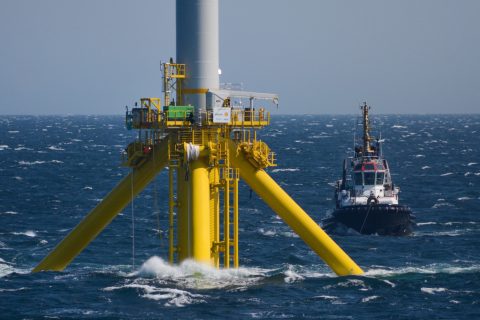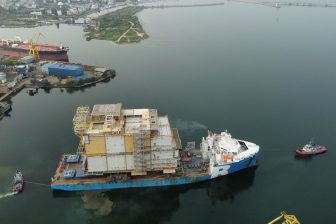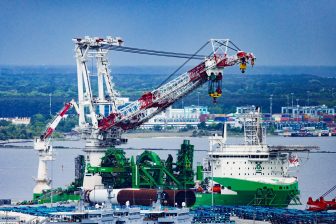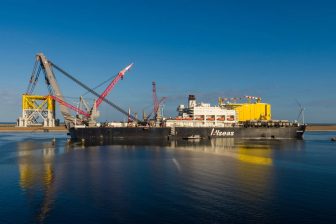
RWE funds study into floating offshore wind solutions
RWE has formed a partnership with Sarens and Tugdock to study their floating offshore wind solutions and their use at Port Talbot and Milford Haven. RWE said it has funded a study to investigate the quayside offload and launch of two types of floating offshore wind platforms – one steel and one concrete – alongside the integration of next-generation wind turbine generators onto these platforms.
The Port Talbot facility in South Wales, run by Associated British Ports, is currently being upgraded to facilitate manufacturing, assembly, and integration of floating offshore wind turbines. The study outcomes will build on previous studies including one undertaken using the Port Of Milford Haven Marine Simulator. The resulting information will inform activities at other suitable ports in the region, such as the Port of Pembroke, owned and managed by Port of Milford Haven Authority.
The study will investigate using Sarens’ established crane and barge technology alongside Tugdock’s innovative submersible platform utilising a hybrid of both approaches. Tugdock’s technology combines a steel frame and patented air lift bags to act either as additional buoyancy or as a submersible platform for lifting or launching heavy marine structures. With an effective load capacity of up to 25,000 tonnes and a modular design, the technology can be easily transported by road and is well-placed to support the deployment of commercial-scale floating wind.
These technical solutions will look to address the logistical challenges ports will face in order to accommodate commercial-scale floating offshore wind deployment. A variety of land and marine equipment will be considered to manoeuvre structures into the water offering novel solutions to the fast-growing floating offshore wind industry.
RWE is now pursuing the Crown Estate’s UK Round 5 seabed auction to secure at least 1 gigawatt of floating offshore wind in the Celtic Sea – an area bordered by the coasts of South Wales, South West England and South East Ireland.
The Celtic Sea has some of the best wind resources in Europe and is a key focus for the Crown Estate in the development of new floating offshore wind capacity. RWE is currently investigating various floating wind technologies and floating wind seabed leases around the world, to provide the most appropriate means of generation for these prospective gigawatt-scale projects.
Philippa Powell, the Celtic Sea Project Director at RWE said, “We are set to participate in the upcoming Crown Estate’s UK Round 5 seabed auction. Commercial-scale floating wind leasing offers the potential for multi-billion pound investment into the region; innovation is one of the key mechanisms that we are pursuing to try to ensure that the potential of this opportunity is realised locally.”
“Working with Sarens and Tugdock is another example of our approach to identify local suppliers to help unlock the huge potential offered by seabed leasing in the Celtic Sea. We see huge potential in a combined Sarens-Tugdock solution, that is flexible and exportable,” Powell said.
You just read one of our premium articles free of charge
Register now to keep reading premium articles.




